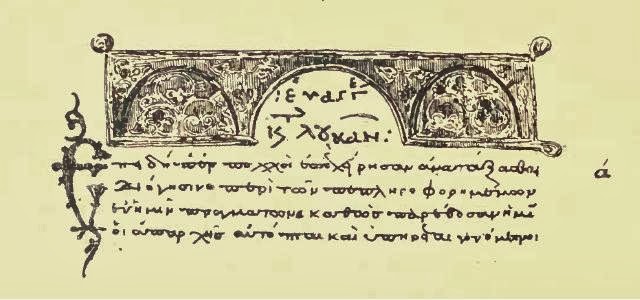Here's some information I have reprinted from a previous blog of mine:
In 1516, Desiderius Erasmus published Novum Istrumentum Omne - the first printed Greek New Testament, and perhaps the crowning achievement of the Dutch Catholic Humanist's life. At the behest of printer Johann Froben, the work was rushed out, in competition with Cardinal Francisco Ximenez' Complutensian Polyglot, and was unfortunately riddled with printing and translation errors.
Despite issues, the tome was well received by the academic community, but scorned by many ecclesiastical authorities, citing its many departures from Latin Vulgate. Erasmus claimed that his goal in the creation of his 'New Instrument' was to revive critical interest in the Bible, whose dated 4th century Latin should updated to its original language of Greek (with a translation into Classical Latin placed alongside). Long-venerated, only recently have historians been able to examine just where much of the text originated.
Most King James Version Only'ist websites state that Erasmus (who gave us the base text of the King James Version,) used "the
best manuscripts in European libraries" for his Novum Instrumentum. Research has shown that this assertion is debatable. Historian W.W. Combs, in his article "Erasmus and the Textus
Receptus" (Spring 1996 Detroit Baptist Seminary Journal)
asserts that Erasmus only borrowed seven manuscripts altogether, all from the Dominican
library in Basel, Switzerland. None were the complete New Testament, and all were relatively young in age:
*Name, content, date.*
Codex 1eap (entire New Testament except Revelation, 12th century, pic above)
Codex 1rK (book of Revelation, 12th century)
Codex 2e (Gospels, 12th century)
Codex 2ap (Acts and Epistles, 12th century)
Codex 4ap (Pauline Epistles, 12th century)
Codex 7p (Pauline Epistles, 12th century)
Codex 817 (Gospels, 15th century)
The origins of all seven of these manuscripts cannot be fully deduced, but there are a handful of records that point to a few. John of Ragusa, a Dominican friar who visited Basel for one of the church councils in 1431, reportedly gifted three manuscripts to the Dominican convent at which he had lodged. Two more codices may have been on loan from the library at St. Paul's. The rest had likely been in collection at Basel for some time.
When Codex 1r (and possibly others) was missing sections, Erasmus lifted those passages from the Latin Vulgate, translated them into Greek, and inserted them into his text. This is a hotly contested choice even today, and is the source of much contention between the KJVOnlyists and the Anti-KJVOnlyists. In any case, Erasmus heavily edited his work, and subsequent editions were far more solid. Notably, the 2nd edition was used by Martin Luther in translating his 1522 German New Testament, and the 3rd edition was used by William Tyndale in his 1526 English New Testament (whose text survived despite heavy Catholic persecution, and 80% of which was carried over into the KJV's New Testament). The 3rd, 4th, and 5th editions were utilised in Robert Estienne's 1551 Editio Regia - the Textus Receptus that would serve as the primary Greek New Testament source for the next several hundred years.



No comments:
Post a Comment